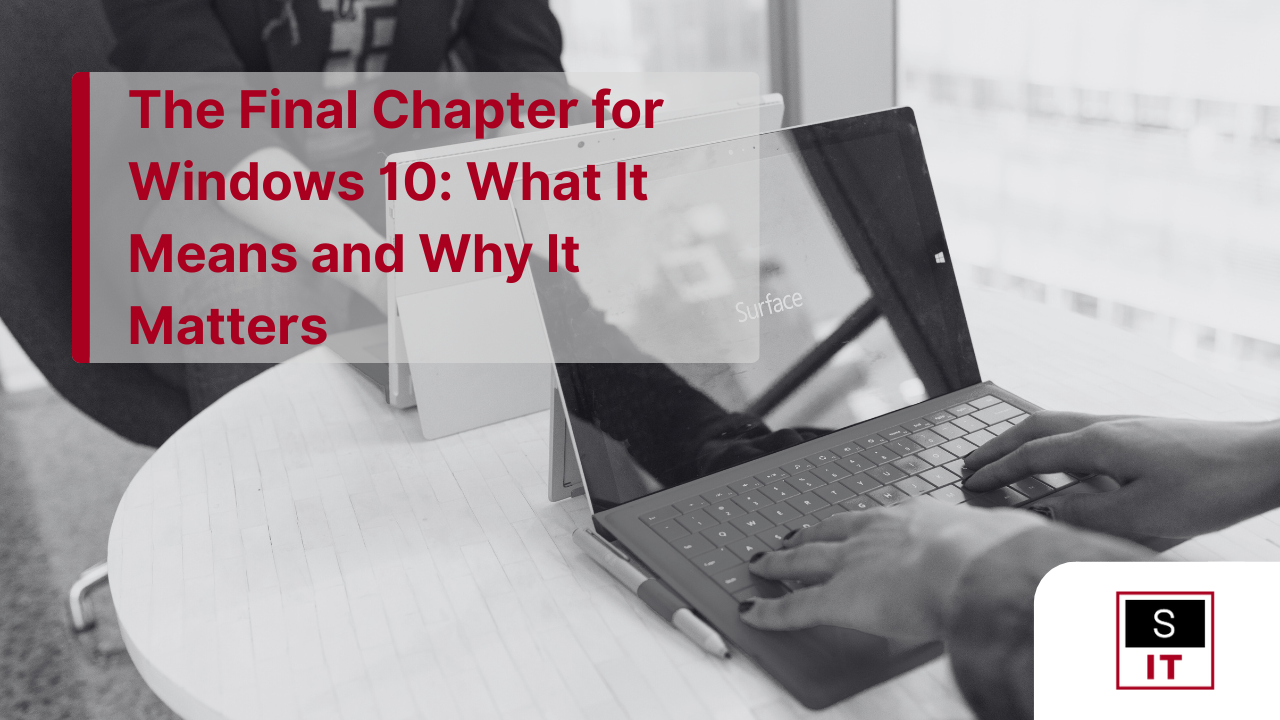
October 17, 2025
The Final Chapter for Windows 10: What It Means and Why It Matters
What “End of Support” Actually Means
Why This Change Has Strategic Consequences
Your Options — and How to Evaluate Them
A Strategic Migration Approach
Microsoft will officially end support for Windows 10 on 14 October 2025.
For over a decade, Windows 10 has powered the backbone of countless Australian businesses — from engineering firms and clinics to education providers and law offices. But with support ending, every organisation still running Windows 10 must decide how to move forward. This is not a simple software update — it’s a security, compliance, and lifecycle management decision.
After 14 October 2025:
Your computer will still run, but without ongoing protection against new vulnerabilities — much like driving a car after its manufacturer stops producing spare parts.
Each month after October 2025, newly discovered vulnerabilities in Windows 10 will remain permanently unpatched. Attackers target these legacy systems specifically because their weaknesses are predictable and unfixable.
This exposes your business to ransomware, credential theft, and privilege-escalation exploits that antivirus tools cannot block at the OS level.
→ TechRadar: Risks of relying on antivirus alone
Many frameworks — including the ACSC Essential Eight, ISO 27001, and APRA CPS 234 — require systems to run vendor-supported software. Operating on an unsupported OS may trigger audit findings, invalidate insurance claims, or breach contract terms with clients handling sensitive data.
Insurers increasingly ask for proof of patching and lifecycle management before renewing cyber policies — unsupported systems fail that test.
Without ongoing patches, legacy systems become progressively unstable and harder to support. Drivers and third-party applications begin to fail.
→ Computerworld: The hidden cost of unsupported systems
IT teams spend more time on reactive fixes and isolation measures, diverting resources from innovation and user productivity.
From accounting platforms to remote-access tools, software vendors will follow Microsoft’s lead — discontinuing testing and support for Windows 10 environments.
→ Ars Technica: Office and app deprecation timeline
That fragmentation creates downtime risks, integration issues, and escalating maintenance complexity.
If devices meet hardware requirements (TPM 2.0 and compatible CPU), upgrading to Windows 11 is the most straightforward path. It delivers ongoing feature development, AI-driven security, and better integration with Microsoft 365.
→ Official upgrade preparation guide
Why it matters: Windows 11 is built with security defaults that reduce user-error risk — BitLocker encryption, Secure Boot, kernel isolation, and automatic credential protection. These controls align with modern compliance frameworks.
Microsoft’s ESU program offers temporary security updates for devices that can’t yet be upgraded.
→ ESU program details
ESU provides time to complete migrations — not a long-term strategy. It should be viewed as a grace period, not a solution.
Many Windows 10 systems are now seven-plus years old. Replacing them ensures longer lifecycle value, energy efficiency, and native Windows 11 support.
→ Tom’s Guide hardware overview
For specialised or legacy use cases, lightweight Linux distributions or ChromeOS Flex can extend device life securely — though these require careful compatibility planning.
A well-structured migration is not just about installation — it’s about continuity, governance, and user experience.
1. Assessment: Inventory every Windows 10 device and map its purpose, data sensitivity, and application dependencies.
2. Planning: Classify systems as upgrade, replace, or retire. Identify licensing needs, hardware shortfalls, and timing for each phase.
3. Pilot Testing: Validate performance, application behaviour, and group policies in a controlled environment before broad rollout.
4. Data Protection: Ensure full system and cloud backups, with versioning and restore tests before migration.
5. Rollout: Execute migrations in batches to minimise downtime. Maintain rollback plans for critical roles.
6. Training & Change Management: Prepare staff for interface and security-control changes. Communicate benefits — not just change for change’s sake.
7. Validation & Support: Post-migration monitoring ensures patch compliance, driver stability, and user feedback loops remain in place.
At Superior IT, we treat migration as part of your security and lifecycle strategy, not a one-off technical task.
Our approach includes:
We enable your organisation to transition securely, on schedule, and within budget — while strengthening your compliance posture and reducing long-term maintenance overhead.
Delaying your migration introduces unnecessary risk. By mid-2025, hardware and support queues will tighten globally as businesses rush to upgrade.
Contact Superior IT for a Windows 10 migration assessment and tailored roadmap.
We’ll identify which devices to upgrade or replace, secure your data, and ensure your systems remain compliant and protected through 2025 and beyond.
If you're looking for more info or assistance, we're a call, email or message away.
App Development, Business & Tax, and Digital Marketing. Super Charge Your Growth.
Existing Customer Support Portal, speak to one of our experts in no time.